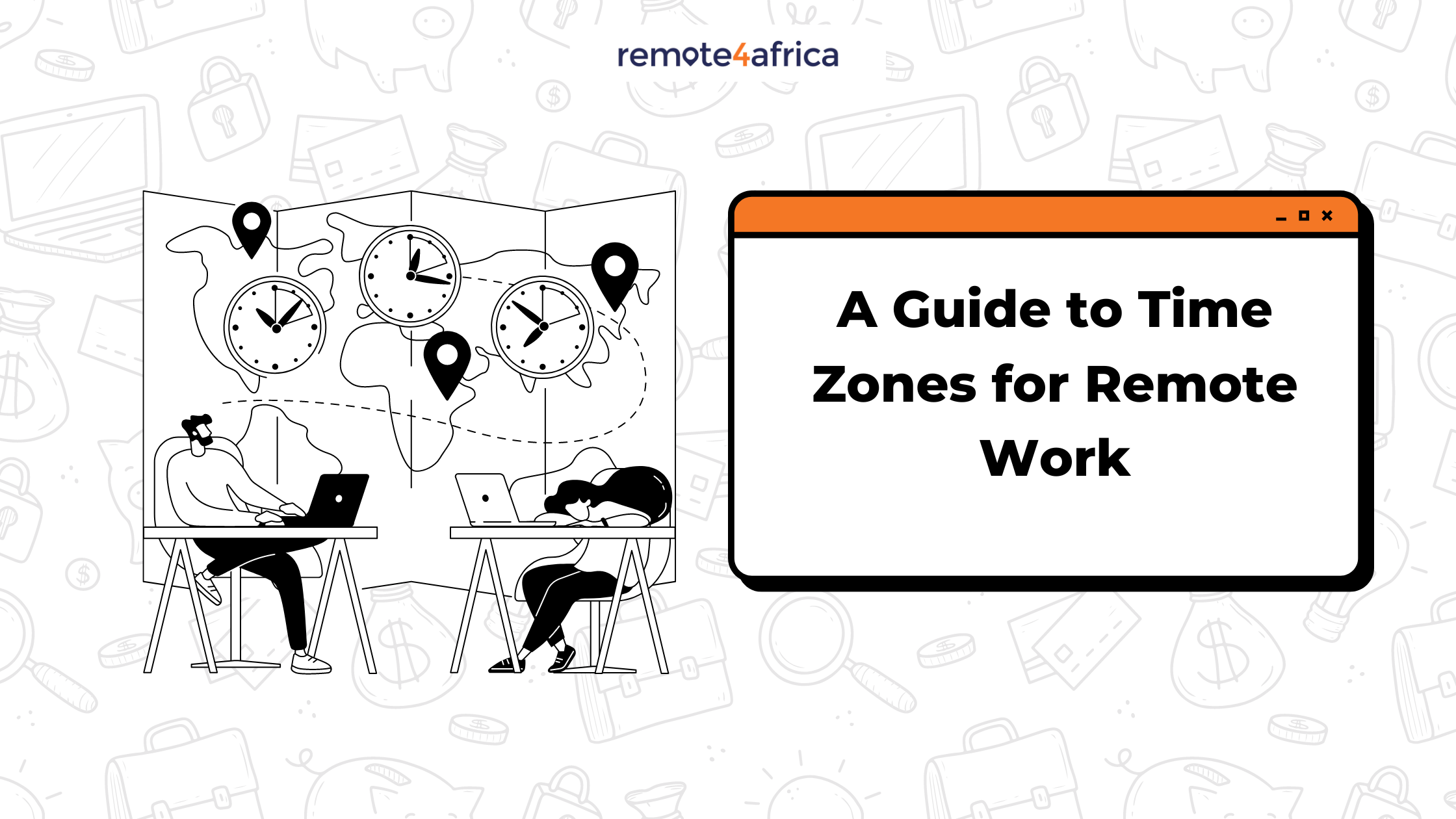A Guide to Time Zones for Remote Work
Navigating time zones is a crucial aspect of your work, which requires careful consideration and strategic planning on your part as a remote worker and your organization as well.

Imagine a software development team spread across three continents: North America, Europe, and Asia. When the North American team starts their workday, it is already evening for the European team, and the Asian team is about to go to bed. As the North American team wraps up their day, the European team is just beginning theirs, and the Asian team is waking up to tackle new tasks. This time zone difference can lead to communication delays, slow response times, and difficulty scheduling meetings where all team members can attend. It requires careful planning, asynchronous communication, and flexibility to ensure smooth collaboration and effective teamwork across the different time zones.
In the interconnected world that the Internet has provided us with, giving people the ability to work in a way that transcends geographical boundaries and enabling remote workers to team up and collaborate across continents and time zones like never before. While the benefits of remote work, which include increased flexibility, access to global talent pools, and reduced overhead costs, are undeniable, the reality of a remote worker trying to connect with teams spread across different time zones presents a unique set of challenges. Here is how to work remotely for a USA company from anywhere in Africa.
As a remote worker, your duties might include scheduling meetings, ensuring effective communication, and maintaining work-life balance. Navigating time zones is a crucial aspect of your work, which requires careful consideration and strategic planning on your part as a remote worker and your organization as well. In this article, you will get to understand the complexities and challenges you might encounter in your work as a remote worker due to time zone differences.
What are the challenges that different time zones pose for remote work?
- Coordination of Meetings: Finding a suitable time for meetings that accommodates all team members across different time zones can be challenging. You may have to attend meetings at odd hours, leading to potential fatigue or productivity issues.
- Communication Delays: A lack of synchronization in communication may lead to delays in response times, especially when team members are working in different time zones. This can slow down decision-making and project progress.
- Misalignment of Work Hours: This can hinder real-time collaboration and communication. It may be difficult to reach team members for urgent matters or quick feedback when they are offline due to time zone differences.
- Impact on Work-Life Balance: Working across time zones can blur the boundaries between work and personal life, especially for team members who have to attend meetings outside of their regular working hours. This can lead to burnout and decreased job satisfaction.
- Difficulty in Building Rapport: Building rapport and fostering team cohesion can be challenging when team members rarely interact in real-time due to time zone differences. This may affect teamwork and collaboration.
- Scheduling Challenges: Scheduling tasks, deadlines, and project milestones becomes more complex when considering the availability of team members in different time zones. It requires careful planning and coordination to ensure everyone is on the same page.
- Overlapping Responsibilities: In some cases, team members in different time zones may have overlapping responsibilities. This can lead to confusion or duplication of efforts if not managed effectively.
What are the strategies to put in place to overcome challenges with time zones in remote work?
As a remote worker, if you are working with an international organization, you cannot avoid having to work with your team members across different time zones. These tips will enhance your remote work life as a digital nomad in Africa. These strategies will help you work seamlessly and function efficiently.
- Know Your Team’s Time Zones: Understand where your team members are located and what time zones they’re in. This helps you coordinate meetings and deadlines effectively.
- Use World Clock Tools: Utilize world clock tools or apps to easily see the current time across different time zones. This helps in scheduling meetings and coordinating work.
- Establish Core Hours: Set core hours when all team members are expected to be available for meetings or collaboration. This ensures overlap in working hours despite different time zones.
- Be Flexible: Flexibility is key in remote work. Be open to adjusting your schedule or accommodating team members in different time zones when necessary.
- Communicate Clearly: Clearly communicate deadlines, meeting times, and expectations, considering the time zones of all team members. Use tools like Slack, email, or project management software to keep everyone informed.
- Consider Rotating Meetings: Rotate meeting times to accommodate different time zones fairly. This ensures that no team member is always stuck attending meetings outside of their normal working hours.
- Respect Personal Time: Be mindful of colleagues’ personal time zones and avoid scheduling meetings during late nights or early mornings for them whenever possible.
- Plan Ahead: Plan ahead for asynchronous communication when necessary. Provide clear instructions and deadlines for tasks to be completed independently, allowing team members to work at their own pace within their time zone.
By following these strategies, you will be able to be in sync with your team and also develop a functional work schedule for yourself that will allow you a healthy work-life balance. Join the remote workforce by applying to these new and available remote jobs .
